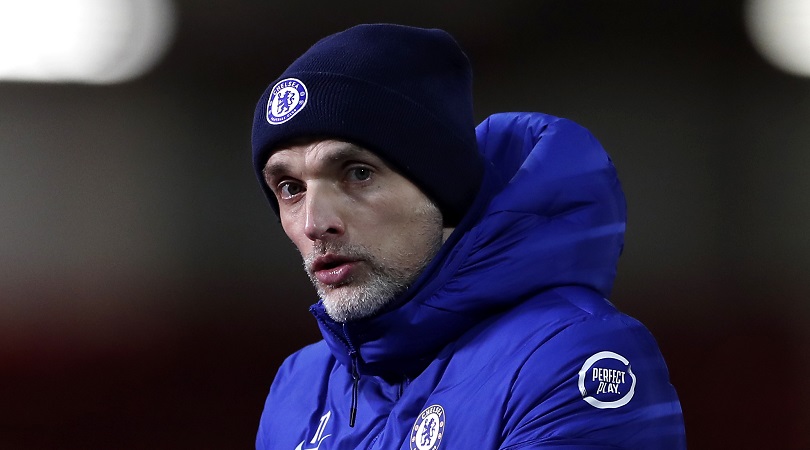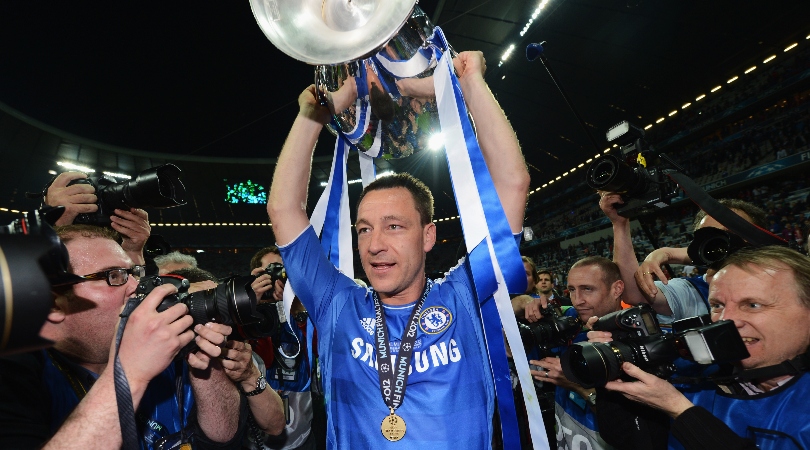Tuchel has made Chelsea more solid - now he has to get them scoring
Tuchel has given Chelsea's defence a reboot, but creativity further forward could still use some work

Most of the post-match analysis of Chelsea’s Champions League win in Bucharest on Tuesday night focused on Atletico Madrid’s disjointed attacking performance. Thomas Tuchel ought to take that as a compliment.
The German has implemented discipline and meticulous positional structure so quickly critics have already internalised the look and feel of his Chelsea; have already forgotten just how far they have come from the final days of Frank Lampard.
It is hard to imagine Lampard’s side – erratic, improvisational, and vulnerable in the transition – coping quite so well with Atletico’s counter-attacks, or indeed avoiding being lured into the attacking trap Diego Simeone set with his ultra-defensive 6-3-1.
But Atletico Madrid didn’t manage a single shot on a target. The last time that happened to the first team was March 2019, when a Cristiano Ronaldo hat-trick saw Juventus overturn a two-goal deficit in Turin. Chelsea’s performance was hardly of that calibre but nevertheless, we should not take for granted just how quickly Tuchel has organised his side.

In fact, Chelsea's performance encapsulated everything - good and bad - about the Tuchel era so far, from the ruthlessly controlled possession to the stale interplay in the final third to the tactical tweaks that marked gradual progress. But let’s start at the beginning, because from the very outset Tuchel’s Blues have been all about control and order.
In the 0-0 draw with Wolves, Chelsea displayed the benefits and the downsides of a 3-4-2-1. That solid base of three centre-backs and two central midfielders ensured Chelsea were invulnerable to the counter-attack, while the use of two inside forwards – creating a box-shape midfield – drew the opposition infield, in turn opening up space for the wing-backs to arrive late in a move. That’s why Callum Hudson-Odoi is enjoying more time on the ball than he ever did as an out-and-out right-winger.
But there is an obvious problem with having five defensive players on the pitch and only one (semi) attacker on the wings. Without being able to create overlaps out wide, and with all the creativity filtering through a congested midfield, it can be easy for the opposition to sit deep and nullify.
The best features, fun and footballing quizzes, straight to your inbox every week.
Over the subsequent seven games Tuchel has introduced little tweaks here and there by cautiously turning dials to try out new forms of attack. In each case they have been built on top of the super-structure, never risking that basic shape; like all modern tacticians Tuchel is building from the bottom up.
𝗧𝗵𝗶𝘀 @MarcosAlonso03 volley against Burnley has won Chelsea's Goal of the Month for January! 🏅 pic.twitter.com/qmrQGxBV46February 9, 2021
In the second game, against Burnley, Mason Mount proved that his tactical intelligence makes him the perfect Tuchel ally, and since then Mount has increasingly sought space in wider areas, gradually moving out towards the flanks to help the occasionally isolated Hudson-Odoi.
But whereas Mount’s progress has been towards the flanks, Timo Werner’s has been distinctly forward. Chelsea’s biggest flaw in a 3-4-2-1 is a propensity to play in front of the opposition, and so with each passing game, Werner is attempting more runs in behind, while beginning them earlier in the move. By the Tottenham Hotspur game at the beginning of February, his team-mates were starting to spot the runs they so often missed during Lampard’s tenure.
This was partly thanks to Tuchel switching to a 3-4-1-2 for this game, with Tammy Abraham’s presence on the last line stretching the opposition defence to create more room for Werner to move. Alas, this tweak did not solve Chelsea’s creativity problems but rather shifted them to a new area, with Mount now isolated in attacking midfield.
Further developments have seen Marcus Alonso make increasing under-lapping runs to replace Werner in the number ten zone, first implemented in the victory over Sheffield United, and the use of an Atalanta-style overlapping centre-back, as seen when Cesar Azpilicueta’s run created the second goal against Newcastle United.
🔥🚲 UNREAL 🚲🔥Enjoy 𝙏𝙃𝘼𝙏 Olivier Giroud goal again...🎥 From every single angle! pic.twitter.com/yMxCvG37dGFebruary 24, 2021
Finally, we saw another new element in Tuesday’s victory over Atletico: capitalising on a rare press, Chelsea hit a long ball onto Olivier Giroud’s head to set away a counter-attack that led directly to the French striker’s goal. There was also further promise, here, in a 3-5-2, in which Mount peeled into the left half-space as Giroud and Werner occupied the three centre-backs.
These are very early days. Chelsea have had a kind fixture list so far, and a month from now everything – from the formation to the results – might have changed. Certainly there is no obvious resolution to the stodginess in midfield (something Southampton capitalised on by forming a six-man ring around Matteo Kovacic and Jorginho) because unlike Antonio Conte, Tuchel doesn’t have Eden Hazard to thaw the blockages in a 3-4-2-1.
Nevertheless, Tuchel has already implemented a rock-solid tactical foundation and has begun to make the minor modifications necessary to unlock greater creativity.
While you're here, subscribe to FourFourTwo today and save 37%. All the exclusive interviews, long reads, quizzes and more but with more than a third-off normal price.
NOW READ
TUCHEL TAKEOVER 5 things that need fixing at Stamford Bridge
WATCH Tuchel praises Giroud after match winner against Atletico
CFC TRANSFER NEWS Tuchel not worried by Tammy Abraham’s contractual situation
